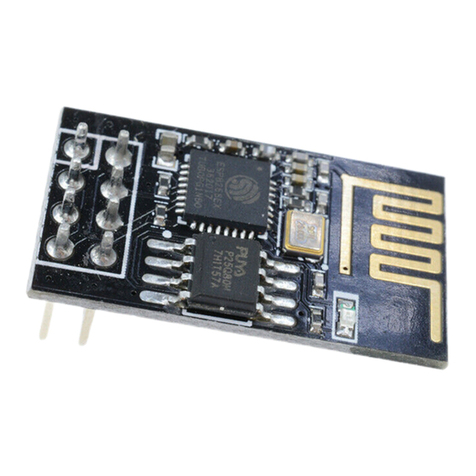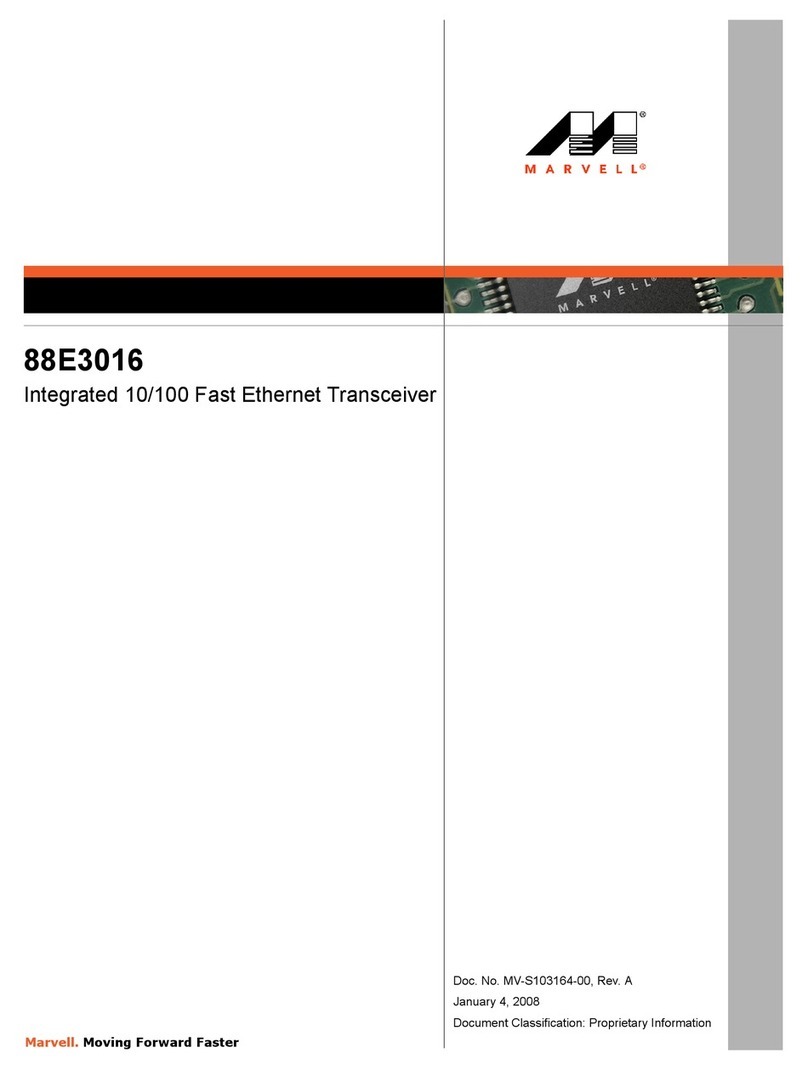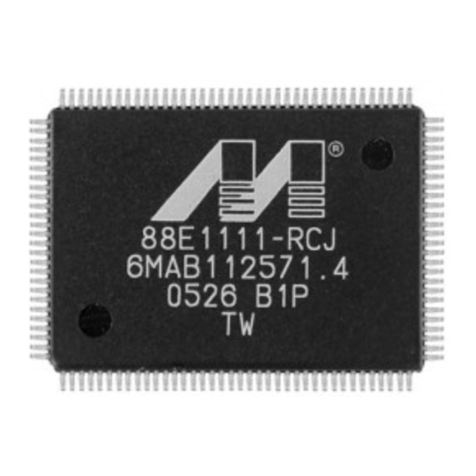
88E3015/88E3018
Integrated 10/100 Fast Ethernet Transceiver
Copyright © 2008 Marvell Doc. No. MV-S103657-00, Rev. D
January 4, 2008, Advance Document Classification: Proprietary Information Page 3
OVERVIEW
The Marvell® 88E3015/88E3018 devices are the fourth
generation Marvell®DSP-based physical layer trans-
ceivers for Fast Ethernet applications. The devices con-
tain all the active circuitry to convert data streams to
and from a Media Access Controller (MAC) and the
physical media. The 88E3015/88E3018 devices incor-
porate IEEE 802.3u Auto-Negotiation in support of both
100BASE-TX and 10BASE-T networks over twisted-
pair cable in full-duplex or half-duplex mode.
The 88E3015/88E3018 devices both support the
Reduced Gigabit Media Independent Interface (RGMII),
and the Media Independent Interface (MII).
The 88E3015/88E3018 devices feature a mode of oper-
ation supporting IEEE compliant 100BASE-FX fiber-
optic networks. Additionally, the 88E3015/88E3018
devices implement Far-End Fault Indication (FEFI) in
order to provide a mechanism for transferring informa-
tion from the local station to the link partner that indi-
cates a remote fault has occurred in 100BASE-FX
mode.
The 88E3015/88E3018 devices feature the Marvell Vir-
tual Cable Tester®(VCT™) technology, which enables
IT managers and networking equipment manufacturers
to remotely analyze the quality and characteristics of
the attached cable plant.
The 88E3015/88E3018 devices use advanced mixed-
signal processing and power management techniques
for extremely low power dissipation and high port count
system integration. The 88E3015/88E3018 devices are
manufactured in an all CMOS process.
88E3015/88E3018 SPECIFIC
FEATURES
The 88E3018 device, housed in a 64-pin QFN package,
offers a pin-upgradeable path toward future Gigabit
Ethernet PHY designs. The 88E3018 device includes
support for IEEE 1149.1 JTAG Standard Test Access
Port and Boundary Scan. The 88E3108 device is avail-
able in Industrial grade (RoHS 6/6 compliant package
only)
The 88E3015 device, housed in a 56-pin QFN package,
provides a cost-efficient, increased board savings
option to the 88E3018.
FEATURES
•IEEE 802.3 compliant 100BASE-TX and 10BASE-
T ports
•Reduced Gigabit Media Independent Interface
(RGMII)
•Media Independent Interface (MII) support
•Source Synchronous MII support
•Virtual Cable Tester®(VCT™) Technology
•PECL interface supporting 100BASE-FX applica-
tions
•Automatic MDI/MDIX crossover for 10BASE-T and
100BASE-TX
•Jumbo frame support to 10 Kbytes with up to
±150 ppm clock frequency difference
•IEEE 802.3u Auto-Negotiation support for auto-
matic speed and duplex selection
•Far-End Fault Indication (FEFI) support for
100BASE-FX applications
•Supports 802.3ah Unidirectional Enable
•Energy detect feature
•Baseline wander correction
•Auto-Calibration for MAC Interface outputs
•COMA Mode support
•Flexible serial management interface (MDC/MDIO)
for register access
•Programmable interrupt to minimize polling
•IEEE 1149.1 Standard Test Access Port and
boundary scan compatible (88E3018 only)
•Supports three (3) LEDs per port
•0.15 μm standard digital CMOS process
•56-pin QFN 8 mm x 8 mm package (88E3015
device)
•64-pin QFN 9 mm x 9 mm package (88E3018
device)
•Available in Industrial grade (88E3018 device,
RoHS 6/6 package only)






























